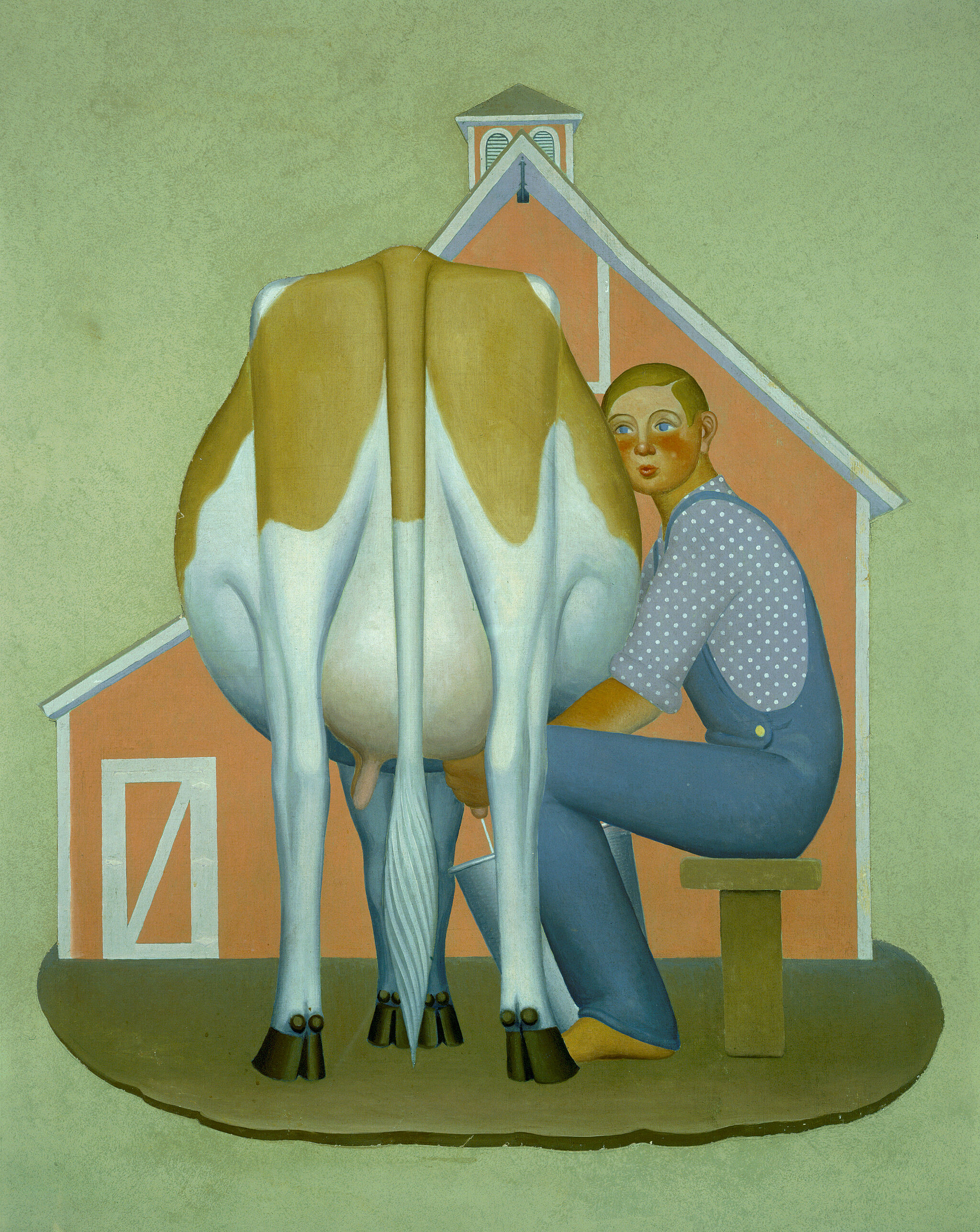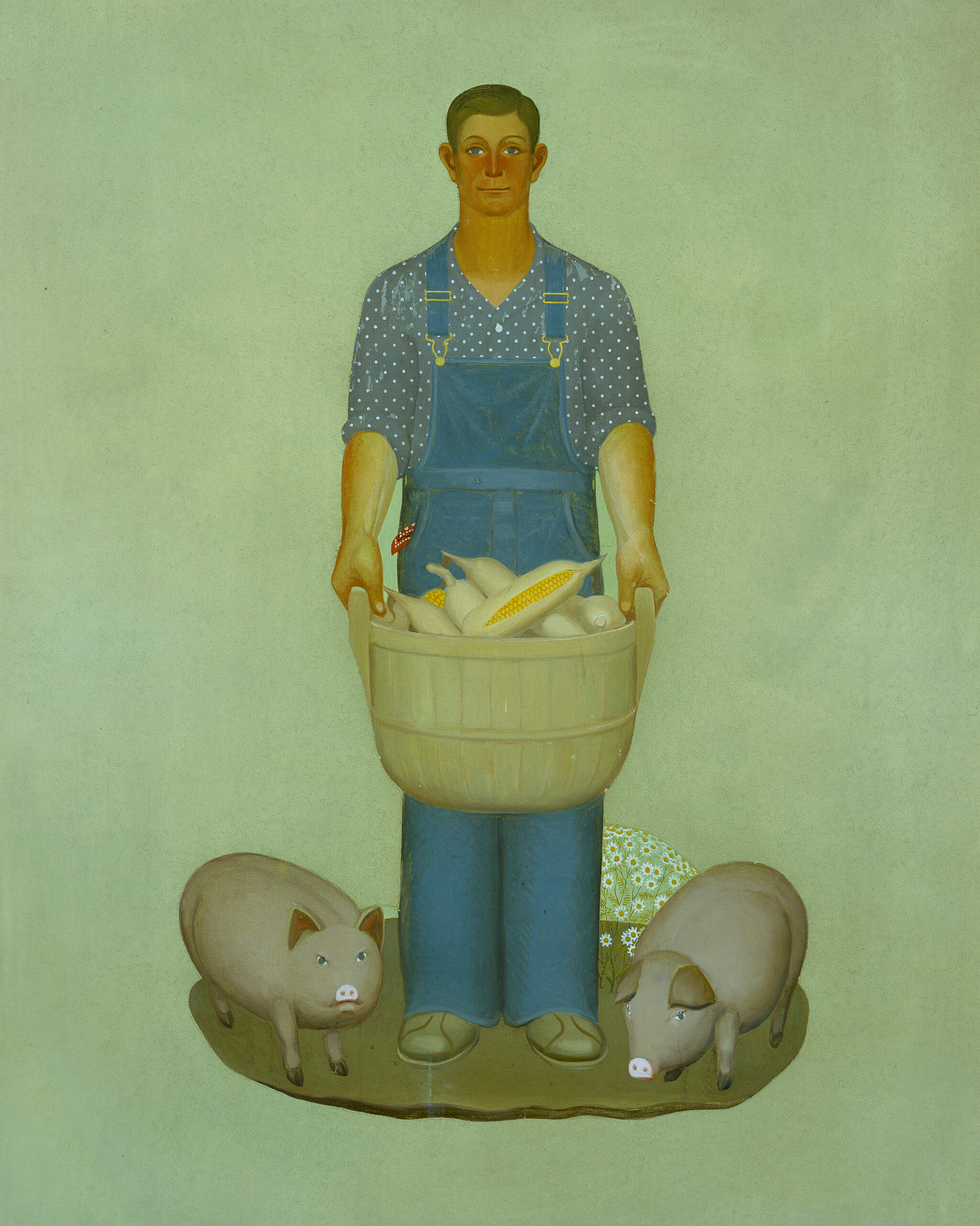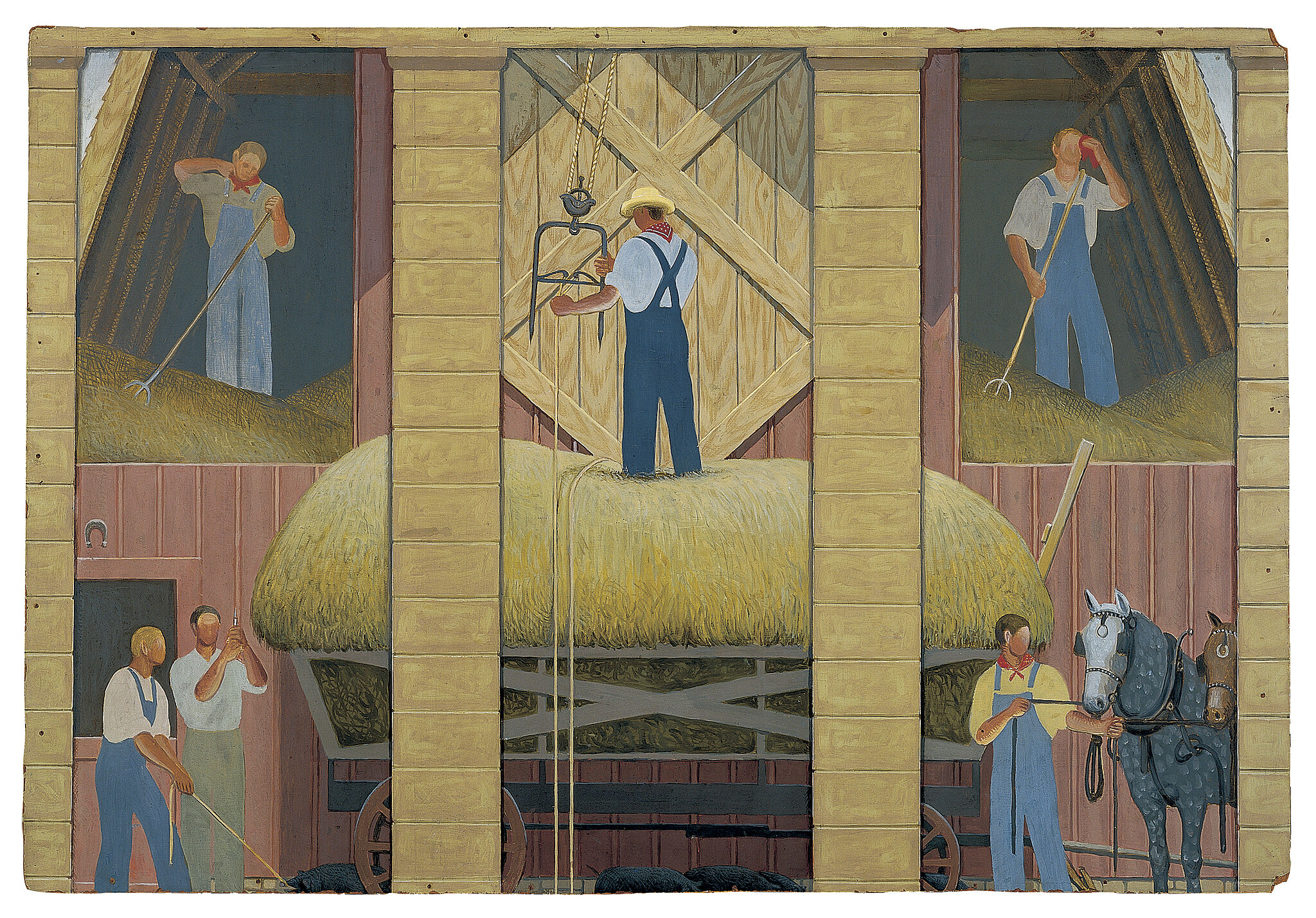Grant Wood: American Gothic and Other Fables | Art & Artists
Mar 2–June 10, 2018
Grant Wood: American Gothic and Other Fables | Art & Artists
Murals
4
Grant Wood created his first mural in his mature, hard-edge style in 1932 to decorate the coffee shop of the Hotel Montrose in Cedar Rapids. Called Fruits of Iowa, the mural consisted of seven panels depicting a farm, a fruit basket, and members of a plump, ruddy-cheeked farm family. A year later, Iowa State University in Ames commissioned him to make murals for its library under the auspices of the Public Works of Art Project (PWAP), the federal government’s Depression-era relief program for artists established in December 1933. Wood chose as his theme a quotation from Daniel Webster’s 1840 remarks on agriculture: “When tillage begins, other arts follow.” His concurrent appointment as state director of the PWAP for Iowa limited his role to designing two murals for the university and supervising their execution by other artists. The first mural to be completed, devoted to agriculture, engineering, and homemaking, was installed at the top of the stairwell leading into the library in 1934; the second mural, showing a pioneer farmer plowing a field, was installed in the library’s lobby in 1937.





